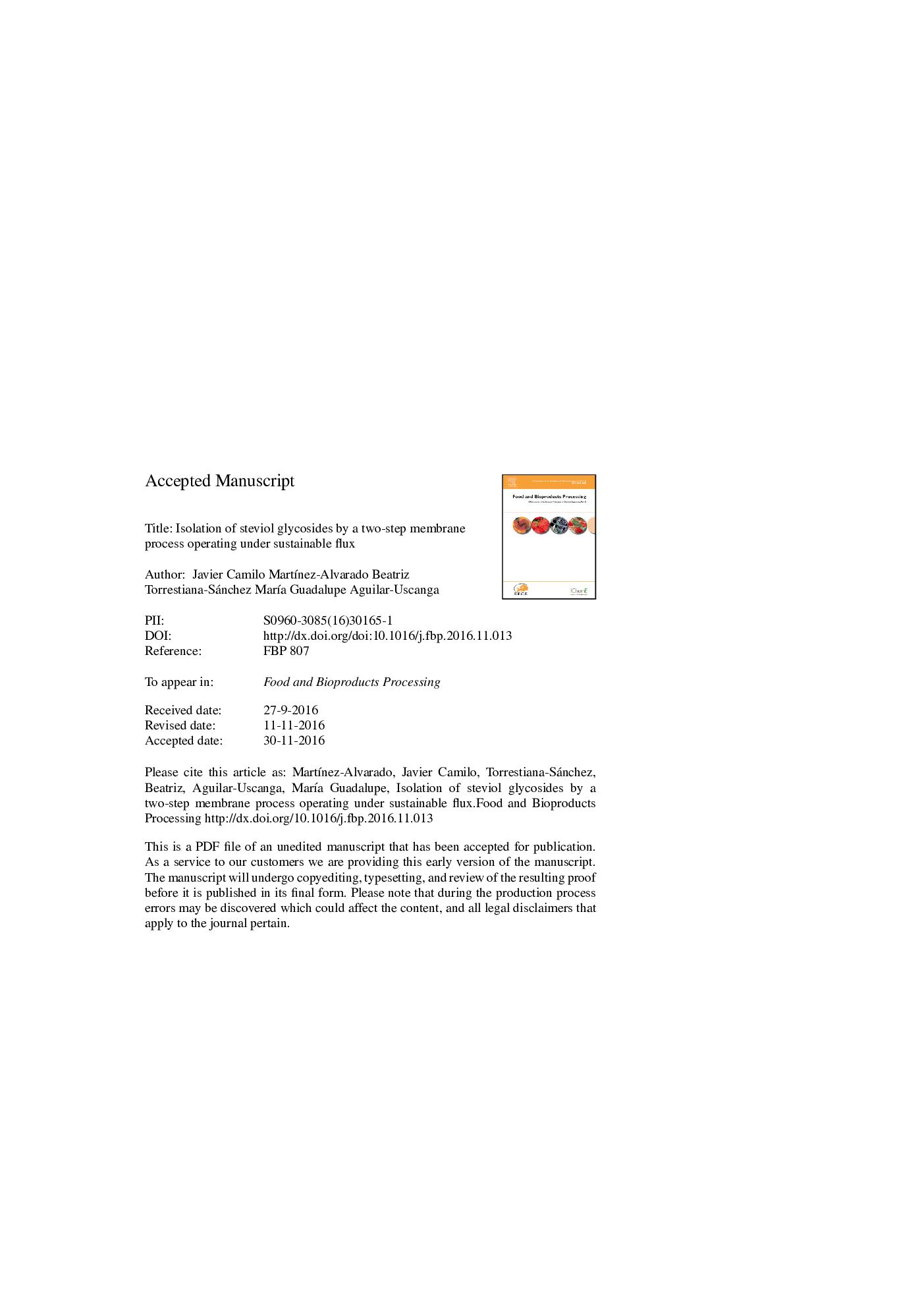| Article ID | Journal | Published Year | Pages | File Type |
|---|---|---|---|---|
| 4753057 | Food and Bioproducts Processing | 2017 | 29 Pages |
Abstract
A two-step membrane process was established to isolate the main glycosides (Stevioside and Rebaudioside-A) from stevia plants grown in different regions. The process involves the clarification of aqueous extracts from dried milled stevia leaves with a 0.2 μm ceramic membrane followed by ultrafiltration/diafiltration with either a 15 or a 3 kDa membrane. During ultrafiltration a range of hydrodynamic operating conditions were evaluated with both membranes (15 and 3 kDa) in order to find the best compromise between working under sustainable flux and eliminating most of the contaminants from the extracts. In addition, principles from high performance tangential flow filtration and continuous diafiltration were combined to increase yield recovery and to reduce operation time. Results indicate that aqueous extracts from stevia plants grown in different regions have different contaminants and glycosides concentrations. Therefore, different membrane pore sizes and operating conditions are needed to obtain high sustainable flux values (â¥21 kg/m2 h) during isolation of glycosides. Moreover, the experimental approach used in the concentration/diafiltration process allowed not only for removal of most of the contaminants, but also for an increase in the sweetener yield and a 50% reduction of process time while keeping similar properties of purified extracts, despite their initial composition.
Keywords
Related Topics
Physical Sciences and Engineering
Chemical Engineering
Bioengineering
Authors
Javier Camilo MartÃnez-Alvarado, Beatriz Torrestiana-Sánchez, MarÃa Guadalupe Aguilar-Uscanga,
